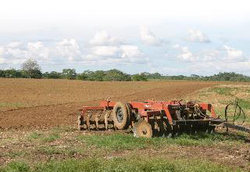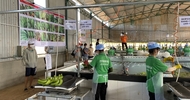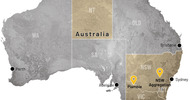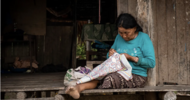La Semana | 24 August 2012 | Español | Français
Note from the editor: In a decision of great import, the Constitutional Court of Colombia has just struck down a legislative amendment that would have allowed for new types of land concentration in this country. The judgment comes in response to a motion for constitutional relief filed by Colombian citizens and members of Congress Jorge Enrique Robledo and Wilson Arias in conjunction with with various Colombian civil society organizations against sections 60 to 62 of Bill 1450 of 2011 enacting the “National Development Plan 2010-2014.” News of the decision first appeared in the following article in the Colombian paper La Semana.
The congressmen and several of the organizations who assisted with the filing of the action will be providing updates on the implications of the decision. Stay tuned.
Note from the editor: In a decision of great import, the Constitutional Court of Colombia has just struck down a legislative amendment that would have allowed for new types of land concentration in this country. The judgment comes in response to a motion for constitutional relief filed by Colombian citizens and members of Congress Jorge Enrique Robledo and Wilson Arias in conjunction with with various Colombian civil society organizations against sections 60 to 62 of Bill 1450 of 2011 enacting the “National Development Plan 2010-2014.” News of the decision first appeared in the following article in the Colombian paper La Semana.
The congressmen and several of the organizations who assisted with the filing of the action will be providing updates on the implications of the decision. Stay tuned.
Court decision stops Santos agricultural development model in its tracks (La Semana | 24 August 2012)
The decision, which aims to protect small and medium landholders, also jeopardizes large investments in the country's eastern highlands as well as the prospect of Colombia's turning itself into a major food producer.
The Constitutional Court has just ruled on a case of far-reaching import for Colombia, one of the most important of recent times.
The decision deals a blow to the plans of President Juan Manuel Santos to convert the highlands into a “new axis of development.” At the same time, it curbs the ardour of the big wheels of this country who were planning to convert relatively unexplored areas of Vichada and Meta departments into food production.
Specifically, the Court decided to strike down three sections (60 to 62) enacting the National Development Plan 2010-2014. Basically, the effect is that peasants or conflict victims who received idle lands from the government will not be able sell or lease them to others for purposes of large-scale agricultural projects. Furthermore, the government will not be allowed to sell, lease, or assign idle lands for that same purpose.
SEMANA has learned that the judges, after some debate, came to the conclusion that these lands are fundamentally intended to benefit small- and medium-scale producers, peasants, and conflict victims, not big capital.
The decision was close (5-4), with justices Gabriel Mendoza, Humberto Sierra, Mauricio González, and Jorge Pretelt dissenting. Clearly, the issues are fraught. As will be recalled, the previous government attempted to implement a development scheme known as the “Carimagua model,” in which an investor joined forces with small- and medium-scale landowners to develop large areas of field crops. What with the public outcry that it provoked, this model had to be scrapped. But the Santos government revived it in the context of its development plan.
The Development Plan sections were challenged in court by Jorge Enrique Robledo and Wilson Arias of the Polo Democrático party. Robledo argued as follows: "Before the government enacted these provisions, smallholders who received land from the government were not allowed to sell it to large landowners, and idle lands could only be given out to peasant families in amounts not exceeding one UAF (family farm unit). But the Development Plan abolished those limitations to allow big companies, especially foreign-owned ones, to appropriate that land."
Robledo wrote on Twitter after learning of the Court's decision: "Big defeat for the Santos land concentration policy.” Robledo's remark is diametrically opposed to those of President Santos who, at a forum held last December 2, put strong emphasis on what he saw as the importance of this model of development: "What does the inclusion of this land mean for the country? Neither more nor less than a doubling of our agricultural potential from the 5 million hectares we have under cultivation today to nearly 10 million. And this of course takes us towards our goal of becoming a breadbasket for the world.”
At the same forum, the President made clear that the proposed land use scheme would be very much in line with the Carimagua model. "And I want to emphasize the development model that we will implement on this land. Here we will being carrying out a project that will not consist of large landowners, but neither will it involve smallholders. It will be a shared project in which companies with financial muscle and technology join forces with small- and medium-scale business units made up of small producers.” It should be noted that in this region of the Colombian Llanos (Orinoquía), a large proportion of the land is either idle or formerly was but has now been given to peasants.
In this context, it is unsurprising to find agriculture minister Juan Camilo Restrepo declaring a few weeks ago that the government must recover 700,000 hectares of idle lands that it has lost through irregular land grants or squatting.
The real impact of the Court's decision will not be known until the text of the judgment is released. Some observers are even speculating that it could affect the wording of the Rural Development Act on which the government has been working for over a year.
That statute, said the President at the same forum, includes the concept of rights of the surface estate (derecho real de superficie). "The idea is to lease large idle state-owned landholdings to businessmen interested in developing long-term agricultural projects on them,” said Santos. Using the same criterion the judges adopted in this case, it seems equally improbable that this concept will withstand legal scrutiny.
(Translated from the original)
(Translated from the original)














